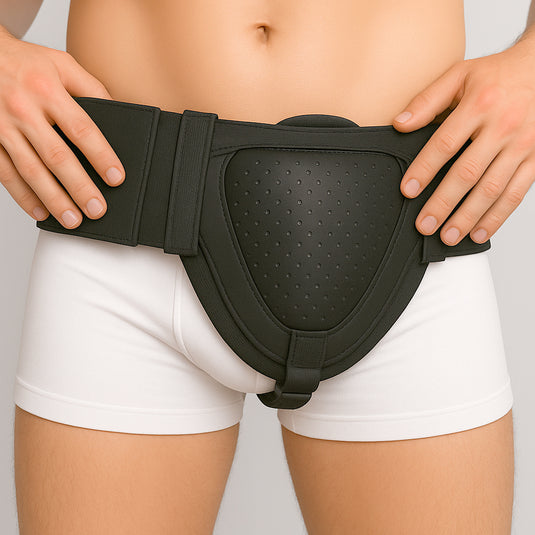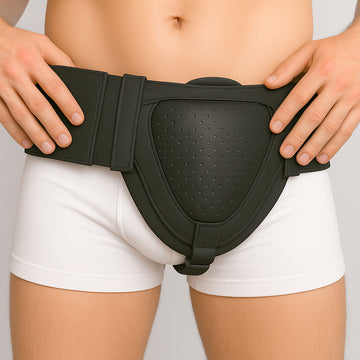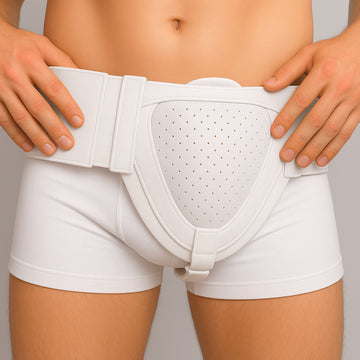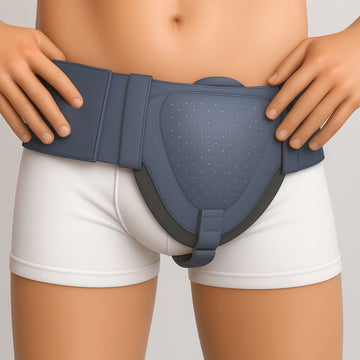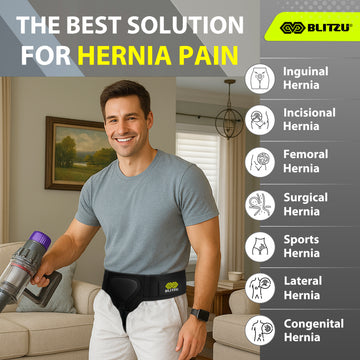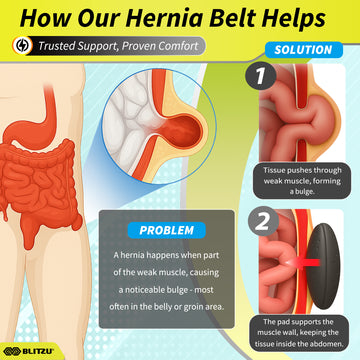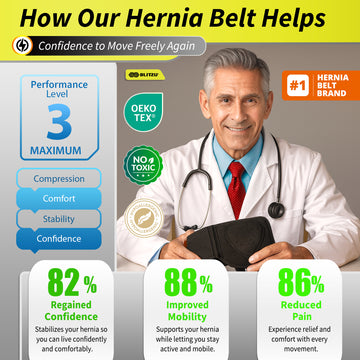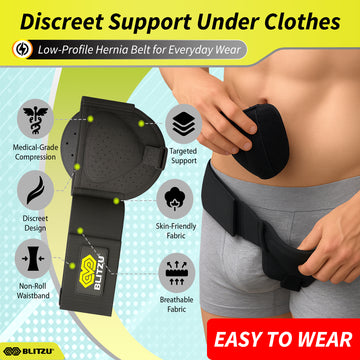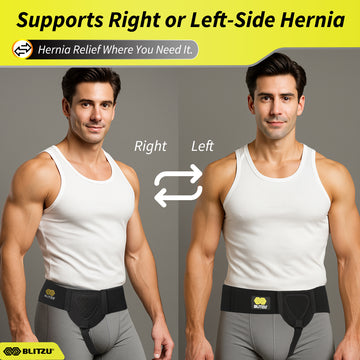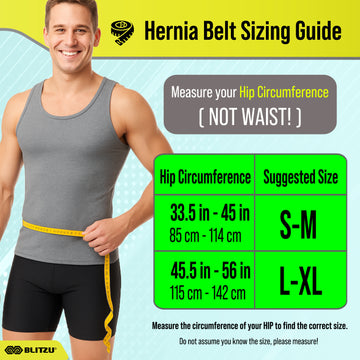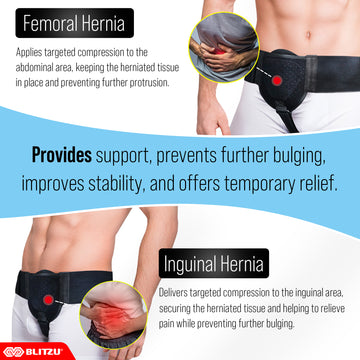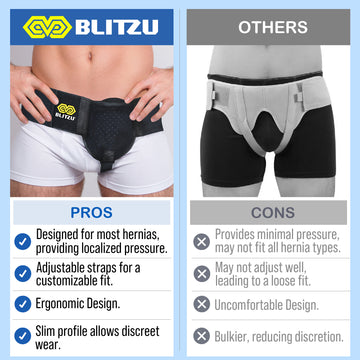







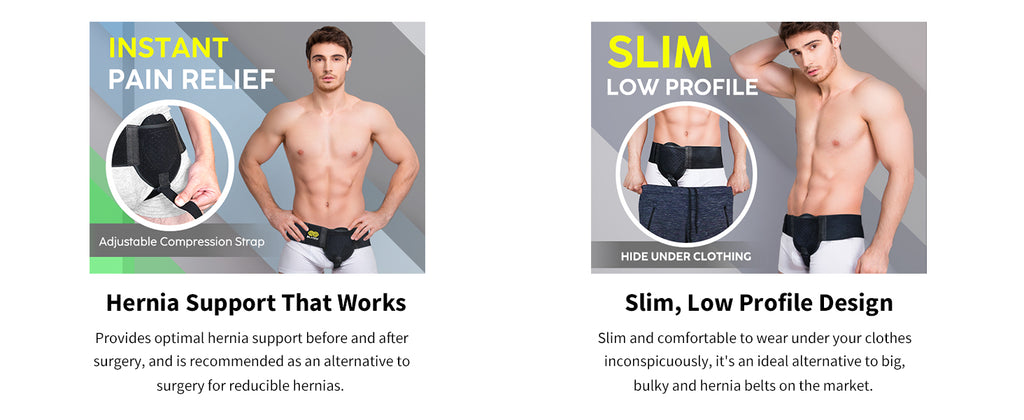
- Instant Umbilical, Femoral & Inguinal Hernia Relief: Do not let your hernia slow you down! Our low profile umbilical hernia belt for men and women provides effective pain relief and comfort before or after hernia surgery. We designed our hernia support belt to add compression to the affected area, reduce discomfort, aid recovery and maintain a comfortable lifestyle with all the support you need.
- Hernia Support That Works: #1 Doctor Recommended Hernia Belt for men and women. Provides optimal hernia support before and after surgery, or use it for treatment alternatives to surgery for reducible hernias. Designed to treat umbilical hernias, incisional hernias, femoral hernias, inguinal hernias, hiatal hernias, epigastric hernias, ventral hernias, abdominal contusions or protrusions.
- Superior Compression With 3d Pad: Surgery can be avoided by wearing our hernia belt regularly, because it holds muscles and loose skin in place. Our hernia brace designed specifically to target the pain associated with hernias and assist in treatment, while providing umbilical, incisional, femoral or inguinal support of the area.
- Comfortable & Adjustable: The belt hernia support truss for women and men is made of flexible waist straps as well as an adjustable waist strap that can be worn on either the left or the right side of the waist to provide maximum comfort and the perfect compression. Our hernia belt is made from a special fabric that is breathable, flexible, and comfortable against your skin. The belt will not get hot under your skin even when you wear it all day.
- Slim, Low Profile Design: Our Truss hernia belt (patent pending) is a super-comfortable, low-profile alternative to big, bulky, and uncomfortable hernia belts on the market. Slim and comfortable enough to wear under your clothes inconspicuously, our groin support strap is ideal for reducing the pain of a reducible hernia before or after surgery by applying light pressure to the affected hernia at the groin areas.
- Assists in Relieving Pain: The cushions help relieve pain by applying pressure to the left or right sides of the hernia depending on its location. Designed especially for men and women, this hernia belt offers hernia pain relief and aids in the treatment process.
- Adjustable to the Perfect Size: The straps are adjustable for the perfect fit. Holds you and gives a relief to the herniated area. Using a soft/flexible tape measure, find the circumference around your hips, in inches. Refer to the sizing chart pictured above to find your size.
Choosing the Right Size for your Hernia Belt
Weight is given as a general guideline. Measure the circumference of your hip with a measuring tape to determine your size.
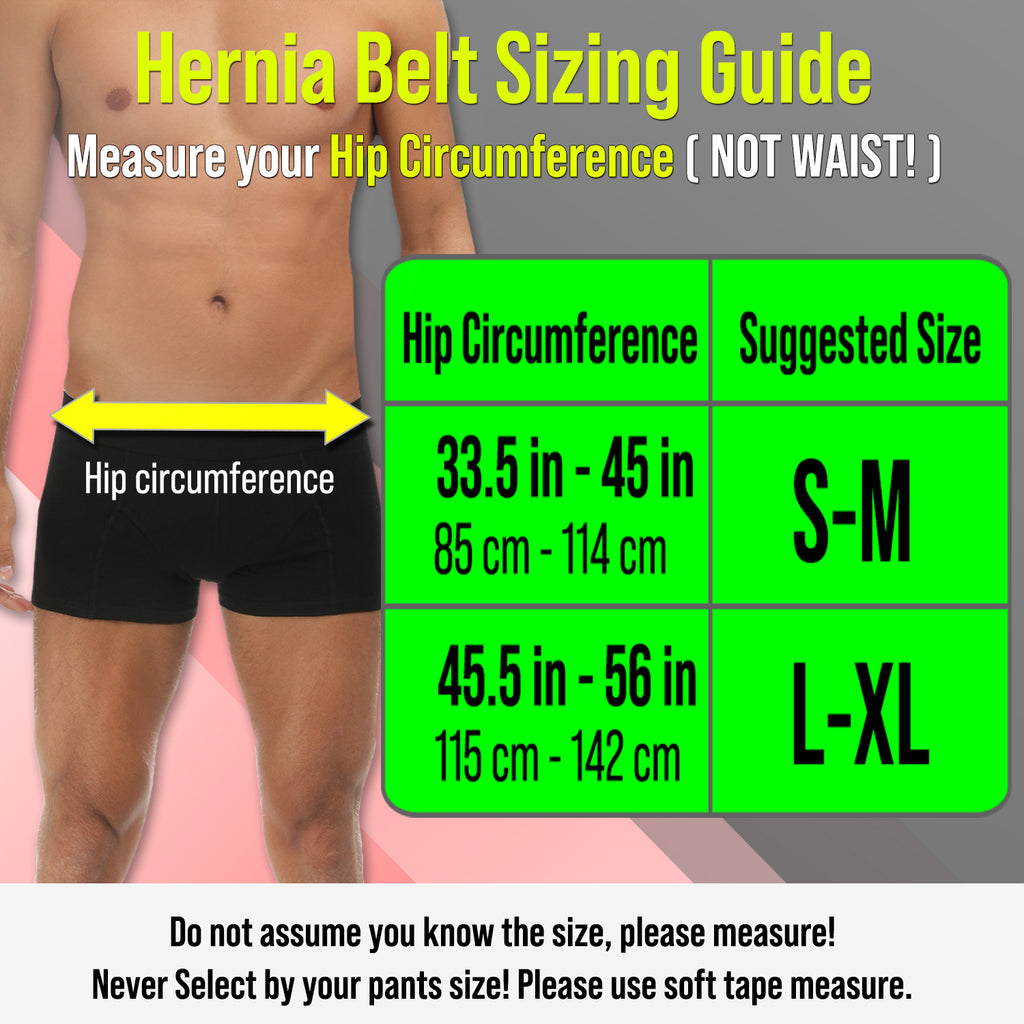
Description
![Inguinal Hernia Belt Groin Support Truss for Bilateral Scrotal & Femoral Hernias for Men or Women]()
![Inguinal Hernia Belt Groin Support Truss for Bilateral Scrotal & Femoral Hernias for Men or Women]()
![Inguinal Hernia Belt Groin Support Truss for Bilateral Scrotal & Femoral Hernias for Men or Women]()
![Inguinal Hernia Belt Groin Support Truss for Bilateral Scrotal & Femoral Hernias for Men or Women]()
![Inguinal Hernia Belt Groin Support Truss for Bilateral Scrotal & Femoral Hernias for Men or Women]()
![Inguinal Hernia Belt Groin Support Truss for Bilateral Scrotal & Femoral Hernias for Men or Women]()
![Inguinal Hernia Belt Groin Support Truss for Bilateral Scrotal & Femoral Hernias for Men or Women]()
![Inguinal Hernia Belt | Groin Support Truss for Bilateral Scrotal & Femoral Hernias for Men or Women]()
![Inguinal Hernia Belt | Groin Support Truss for Bilateral Scrotal & Femoral Hernias for Men or Women]()









- Instant Umbilical, Femoral & Inguinal Hernia Relief: Do not let your hernia slow you down! Our low profile umbilical hernia belt for men and women provides effective pain relief and comfort before or after hernia surgery. We designed our hernia support belt to add compression to the affected area, reduce discomfort, aid recovery and maintain a comfortable lifestyle with all the support you need.
- Hernia Support That Works: #1 Doctor Recommended Hernia Belt for men and women. Provides optimal hernia support before and after surgery, or use it for treatment alternatives to surgery for reducible hernias. Designed to treat umbilical hernias, incisional hernias, femoral hernias, inguinal hernias, hiatal hernias, epigastric hernias, ventral hernias, abdominal contusions or protrusions.
- Superior Compression With 3d Pad: Surgery can be avoided by wearing our hernia belt regularly, because it holds muscles and loose skin in place. Our hernia brace designed specifically to target the pain associated with hernias and assist in treatment, while providing umbilical, incisional, femoral or inguinal support of the area.
- Comfortable & Adjustable: The belt hernia support truss for women and men is made of flexible waist straps as well as an adjustable waist strap that can be worn on either the left or the right side of the waist to provide maximum comfort and the perfect compression. Our hernia belt is made from a special fabric that is breathable, flexible, and comfortable against your skin. The belt will not get hot under your skin even when you wear it all day.
- Slim, Low Profile Design: Our Truss hernia belt (patent pending) is a super-comfortable, low-profile alternative to big, bulky, and uncomfortable hernia belts on the market. Slim and comfortable enough to wear under your clothes inconspicuously, our groin support strap is ideal for reducing the pain of a reducible hernia before or after surgery by applying light pressure to the affected hernia at the groin areas.
- Assists in Relieving Pain: The cushions help relieve pain by applying pressure to the left or right sides of the hernia depending on its location. Designed especially for men and women, this hernia belt offers hernia pain relief and aids in the treatment process.
- Adjustable to the Perfect Size: The straps are adjustable for the perfect fit. Holds you and gives a relief to the herniated area. Using a soft/flexible tape measure, find the circumference around your hips, in inches. Refer to the sizing chart pictured above to find your size.
Size Chart
![hernia belt for male female man woman]()
Choosing the Right Size for your Hernia Belt
Weight is given as a general guideline. Measure the circumference of your hip with a measuring tape to determine your size.

Why do you need it
FAQs

